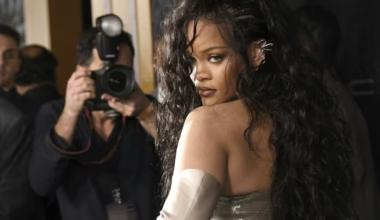How Bob Dylan’s Electrified Rebellion Redefined the Soul of Modern Music
Some artists evolve. Bob Dylan ignited a revolution.
In 1965, standing onstage at the Newport Folk Festival with an electric guitar slung across his shoulder, Dylan didn’t just make a stylistic change—he detonated the boundary between tradition and transformation. That one act, infamous and historic, redefined what it meant to be a songwriter, a performer, and a cultural force.
From Voice of Protest to Sonic Visionary
Before that seismic moment, Dylan was already the defining voice of a generation. Songs like “Blowin’ in the Wind” and “The Times They Are A-Changin’” positioned him as a poetic conscience in turbulent times. With a harmonica and acoustic guitar, he spoke to civil rights, injustice, and generational unrest. He wasn’t just a folk singer—he was the movement’s musical compass.
But Dylan was never built to be a monument. He was restless, defiant, and allergic to comfort. In the studio, his instincts began pulling him in new directions—layering rhythm sections, playing with surrealist imagery, and leaning into distortion. The result was Bringing It All Back Home, an album that split itself down the middle: acoustic protest songs on one side, electric experimentation on the other.
And then came Highway 61 Revisited.
The Shot Heard ‘Round the Rock World
Its opening track, “Like a Rolling Stone,” wasn’t a song. It was a declaration. At over six minutes long, it bulldozed radio conventions and demanded that rock music evolve. The opening snare crack was less a beat and more a gunshot—the start of a new creative era. The lyrics were caustic, liberating, unorthodox. They didn’t offer messages, they posed riddles. It was Dylan breaking free—not from folk music, but from expectations.
When Dylan took that electric sound on the road, especially to Newport, he was met with boos. Folk purists felt betrayed. He wasn’t the messenger they wanted anymore. But Dylan, unfazed, leaned into the dissonance. He refused to become a symbol. “An artist has to be careful never to arrive at a place where he thinks he’s at,” he would later say. “You’re constantly becoming.”
A Genre and a Generation Transformed
His act of rebellion didn’t isolate him—it inspired an artistic avalanche. Folk-rock was born in his wake. The Byrds, Simon & Garfunkel, and countless others borrowed from his formula. The Beatles famously evolved after hearing Dylan’s work, moving from catchy love songs to sprawling, introspective albums like Rubber Soul and Revolver. Dylan made it safe—and necessary—for pop music to get personal, strange, and cerebral.
Lyrically, he revolutionized language in music. Tracks like “Ballad of a Thin Man” and “Visions of Johanna” read like cryptic literature. He broke the three-minute mold. He broke the fourth wall. His songs didn’t tell you what to think—they forced you to feel, wrestle, and reflect.
Critics didn’t always know what to make of it. But young listeners did. They saw a mirror—flawed, fragmented, beautiful—and embraced it.
The Art of Constant Becoming
Dylan didn’t stop at one transformation. He cycled through eras like seasons: Nashville crooner, Christian evangelist, gypsy poet, ragged-blues elder. Each shift risked alienation. Each shift deepened his legend. He didn’t chase popularity—he chased purpose. And that made all the difference.
In 2016, the Nobel Committee honored Dylan not just as a musician, but as a literary titan. It was a recognition that his lyrics had expanded the cultural definition of what songwriting could be—not just entertainment, but enduring art.
Legacy Beyond Genre
Today, Dylan’s creative risk-taking ripples across genres. His fingerprints are on the confessional pens of indie songwriters, the philosophical bars of hip-hop artists, and the introspective turns of pop lyricists. He modeled a path where growth is non-negotiable, and where authenticity trumps audience approval.
The moment Dylan plugged in was never about volume. It was about voice—claiming the freedom to evolve. It was about rejecting labels, shattering myths, and choosing artistic truth over cultural comfort.
He didn’t just break the rules. He rewrote them.
And in doing so, Bob Dylan didn’t just reshape the sound of music.
He reshaped its soul.





